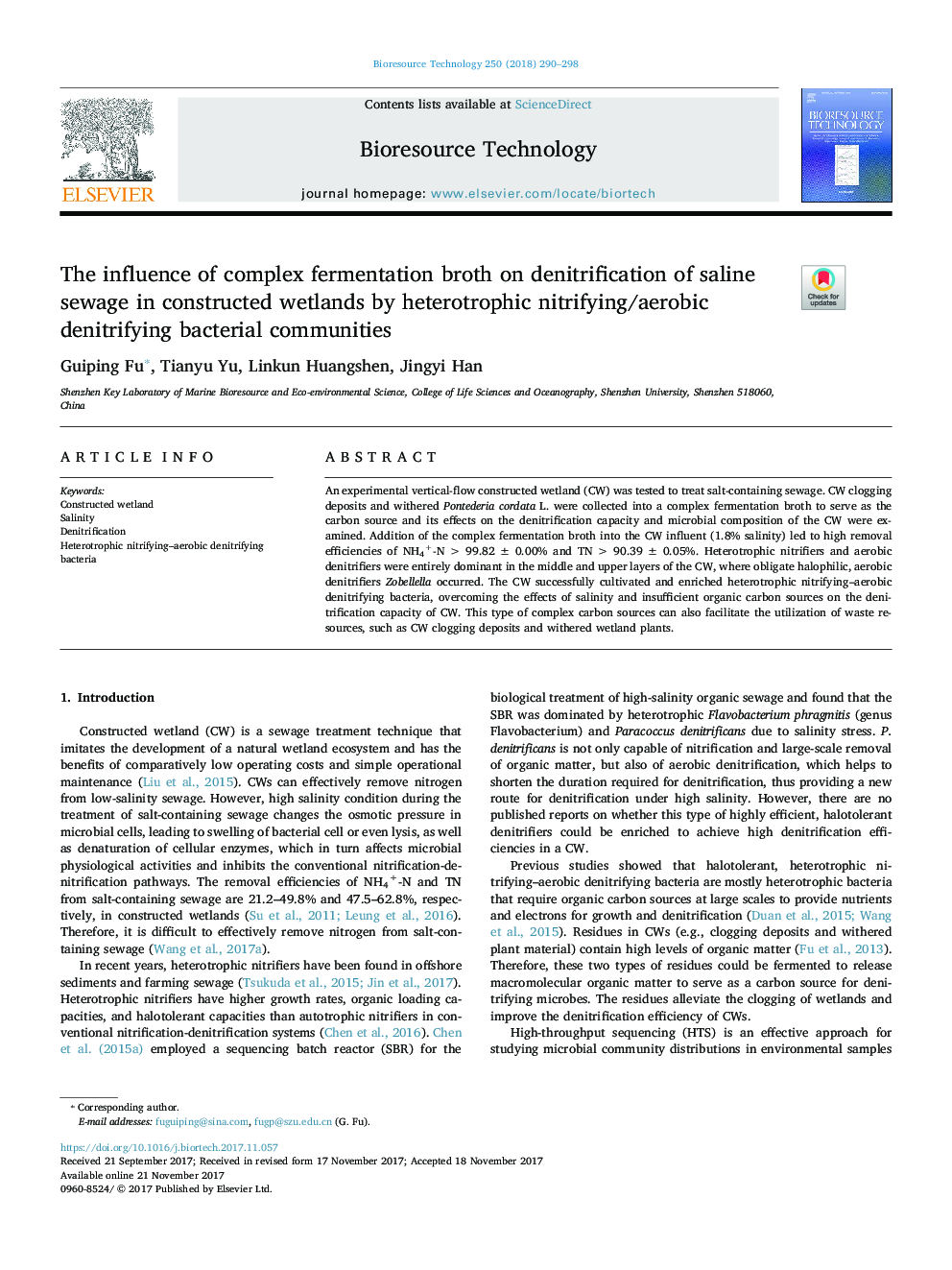| Article ID | Journal | Published Year | Pages | File Type |
|---|---|---|---|---|
| 7068715 | Bioresource Technology | 2018 | 9 Pages |
Abstract
An experimental vertical-flow constructed wetland (CW) was tested to treat salt-containing sewage. CW clogging deposits and withered Pontederia cordata L. were collected into a complex fermentation broth to serve as the carbon source and its effects on the denitrification capacity and microbial composition of the CW were examined. Addition of the complex fermentation broth into the CW influent (1.8% salinity) led to high removal efficiencies of NH4+-Nâ¯>â¯99.82â¯Â±â¯0.00% and TNâ¯>â¯90.39â¯Â±â¯0.05%. Heterotrophic nitrifiers and aerobic denitrifiers were entirely dominant in the middle and upper layers of the CW, where obligate halophilic, aerobic denitrifiers Zobellella occurred. The CW successfully cultivated and enriched heterotrophic nitrifying-aerobic denitrifying bacteria, overcoming the effects of salinity and insufficient organic carbon sources on the denitrification capacity of CW. This type of complex carbon sources can also facilitate the utilization of waste resources, such as CW clogging deposits and withered wetland plants.
Related Topics
Physical Sciences and Engineering
Chemical Engineering
Process Chemistry and Technology
Authors
Guiping Fu, Tianyu Yu, Linkun Huangshen, Jingyi Han,
